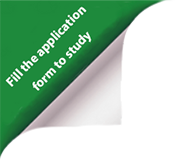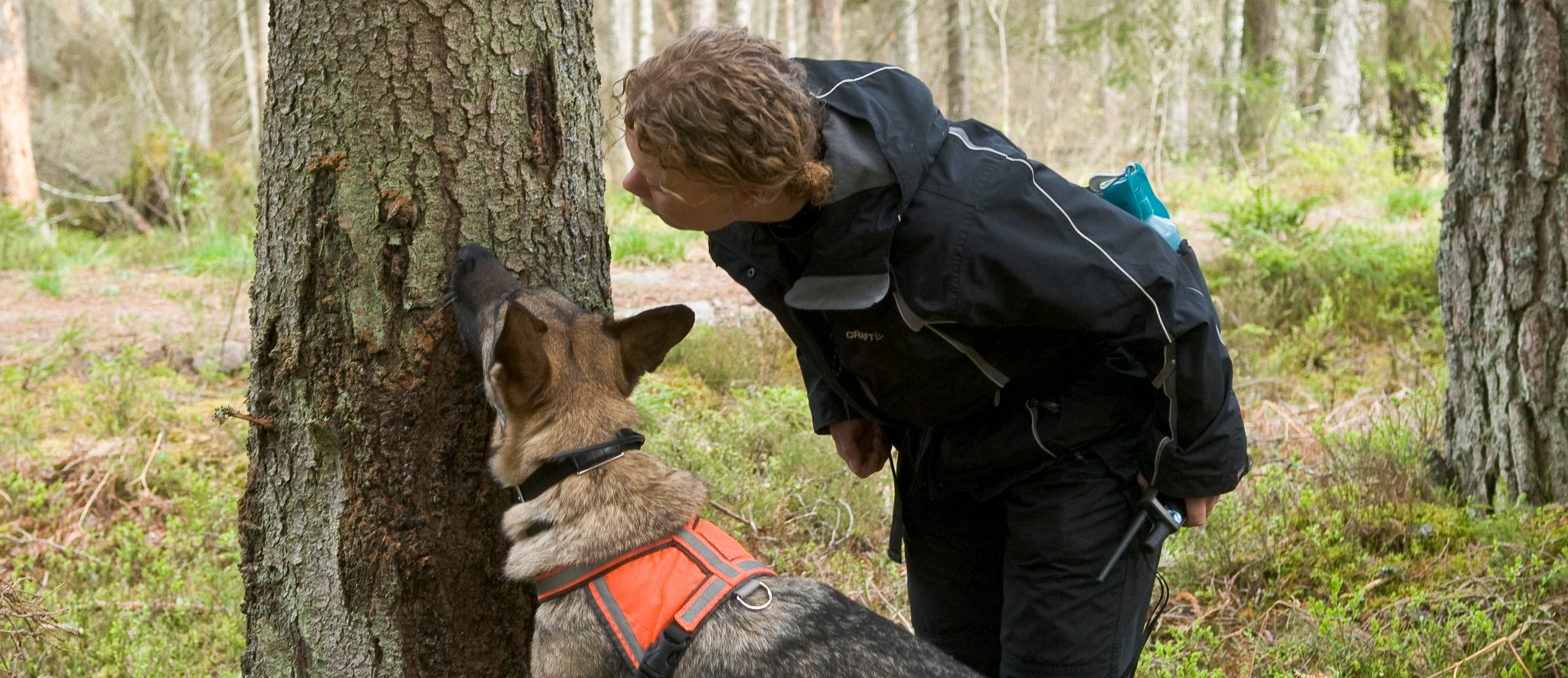Researchers of the project EXTEMIT-K have decided to demonstrate Ips typographus monitoring method in the Czech forests. This commonly used method in Sweden was demonstrated by Anette Johansson from SnifferDogs Sweden with her specially trained dog helpers. Demonstration of the method took place on 2nd June at 9.30 a.m. in the forests of the University Forest Enterprise in Kostelec nad Černými lesy. During the demonstration, a Belgian shepherd's dog easily identified two trees attacked by Ips typographus. One tree was subsequently cut down and sample part was debarked. We found massive infestaation with almost mature feeding larvae . Furthermore, the dog showed how to find a pheromone dispenser placed on a healthy tree and also how to find infested trap tree . The demonstration showed the possibility how dog can detect the attacked tree and they can be cut down and removed from forest. This method could protect hundreds of hectares of spruce forest stands in the future, after implementation to conditions in the czech Republic.
The Spruce Bark Beetle
The European Spruce Bark Beetle is one of the most destructive forest pests in Europe. The last 10 years the bark beetle has caused severe damage in Swedish forests and they keep causing trouble.
When the temperature rises towards +20°C in the spring/early summer the bark beetles start their flight. To conquer the tree’s defence, the bark beetles needs to be several thousands who attack the tree simultaneously. They coordinate the attack by communication with pheromones (odour signals). 2-3 weeks after the attack the adults are done laying eggs and migrate to another tree, repeating the process (= killing another tree). 6-8 weeks after the attack the new generation bark beetles are fully developed and leave the tree to attack another tree.
Locating recent infestations
Search and Remove
In Sweden the most widely used method for damage control is the “search-and-remove-method” which attempt to remove infested trees within 2-3 weeks of the attack. Unfortunately, the method has not been as successful as desired since the foresters have not been able to find most of the recent attacked trees. Recently infested trees are really difficult to spot. Close range inspection (< 1 m) is needed for human detection. For detection dogs that are trained to recognize the bark beetles pheromones it is easy to locate where the bark beetles has settled.
Effecient search
By locating and removing infested trees within 6-8 weeks after the initial attack, attacks caused by new generations can be prevented.
Preferred time to search for new infestations is within 1-2 weeks after the first flight in the spring. If it is possible to locate and remove these trees before the adults leave the tree it is possible to prevent further spreading by getting adults, eggs and larvae out of the forest at once.
The Detection Dog – A Cost Efficient Tool to Detect Infestations
Field trials made by SnifferDogs Sweden, in collaboration with the Swedish University of Agricultural Sciences (SLU) and the Swedish Forest Agency, shows that detection dogs trained to detect and locate trees infested by bark beetles is an efficient tool to rapidly find trees recently attacked by bark beetles.
- The dog and handler teams searched larger areas and found more infestations than an experienced human (who relays upon visual cues) does without a dog.
- The dogs could detect and localize a recently attacked spruce from > 100 meters distance.
- The dogs could detect an attacked spruce from the moment it was attacked until several weeks later.
Locating Bark Beetle infestations using Dogs - Fast & Cost Efficient
We search appr 10 ha an hour! (depending on terrain, wind and the amount of infestations in the area)
Using our specially trained dogs we are able to locate infestations easily missed by humans. For example, the dogs can find recent infestations even if they are located in the midst of a stand.
When we have located an infestation we mark the trees with ribbon or spray paint. We also mark the locations coordinates using GPS.
When the mission is completed we report back to the client describing where the infestations found are located, number and size of the trees, if they are located in a stand or in the edge of a clear felling etc. The client also receives the GPS coordinates of the locations as well as the positions marked on a map to easily locate the infested trees when it is time to take them down and transport them out of the forest.
Author: Anette Johansson, SnifferDogs Sweden


